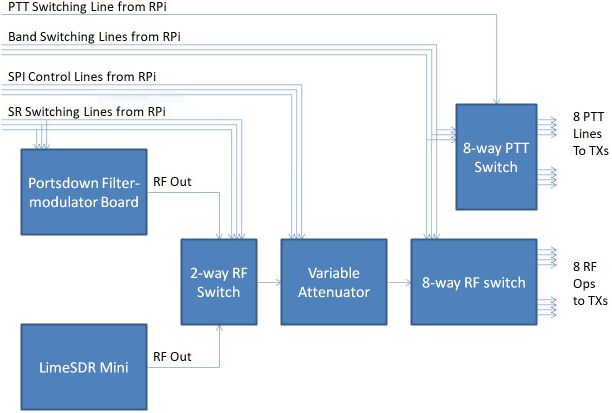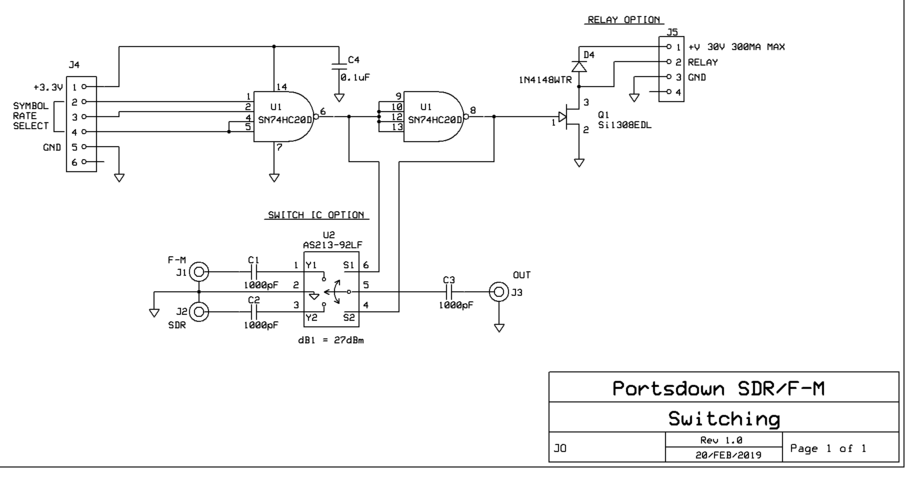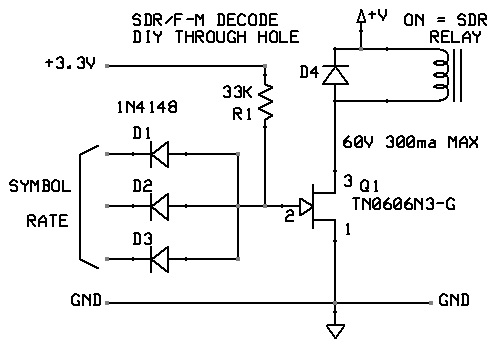Difference between revisions of "2-Way RF Switch"
| Line 40: | Line 40: | ||
===Self-build version using a Coaxial Relay=== | ===Self-build version using a Coaxial Relay=== | ||
| − | John, our hardware designer, has provided this suggested circuit for a self-build version (dead-bug or veroboard) using a coaxial relay: | + | John, our hardware designer, has also provided this suggested circuit for a self-build version (dead-bug or veroboard) using a coaxial relay: |
[[File:Simple RF Switch.jpg|498px]] | [[File:Simple RF Switch.jpg|498px]] | ||
Revision as of 13:50, 17 April 2019
The 2-way RF switch is a new addition to the Portsdown system. It allows a single PA (or the 4-way or 8-way RF switch) to be driven from either the Portsdown Filter-modulator board or the LimeSDR without reconfiguration. So, it is intended as 2 inputs, one output, rather than the single input, multiple outputs of the 4-way and 8-way switches.
This block diagram shows a comprehensive arrangement with all the features. Many of the blocks are optional – it depends on your requirements.
The 2-way switch decodes the signals sent on the symbol rate switching lines (detecting all 3 high, which was previously unused) and selects the LimeSDR output, rather than the Filter-modulator board, when required.
Schematic
Test results
The test results for the switch (when running from 3.3v) were:
| Frequency | Insertion Loss | Isolation |
|---|---|---|
| 71 MHz | < 0.5 dB | 36 dB |
| 146 MHz | < 0.5 dB | 35dB |
| 437 MHz | 0.8dB | 35dB |
| 1255 MHz | 1.5dB | 21dB |
| 2405 MHz | 3.5dB | 19dB |
The insertion loss at 2405 MHz can be reduced by 0.5 dB by trimming the centre pins of the SMA connectors to be flush with the underside of the PCB. A further improvement could probably be made by trimming the RF tracks on the top of the PCB so that they do not extend beyond the SMA centre pin.
The PCB for the RF switch is available from the BATC shop.
Self-build version using a Coaxial Relay
John, our hardware designer, has also provided this suggested circuit for a self-build version (dead-bug or veroboard) using a coaxial relay:



